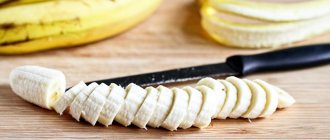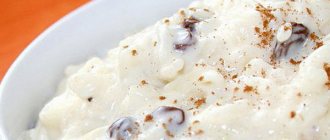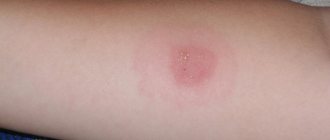When to give your child cookies
A baby can try cookies for the first time even at six months. Only on the condition that it is intended for baby food. And you will first dissolve it in breast milk or formula.
However, it is better to wait until ten months or even up to a year with such complementary feeding. If your baby is prone to allergies, then you should not rush to introduce cookies into complementary foods.
A product that is not specialized for the youngest, even a dietary product like Maria or zoological, is best postponed until the age of two.
Many parents let their children chew cookies during teething in order to relieve itching from the gums.
I gave my son cookies for the first time when he was 11 months old.
The effects of coffee on a child's body
Coffee beans contain many chemical compounds that affect the body in different ways:
- caffeine;
- amino acids;
- organic acids;
- tannins;
- fat;
- sucrose (a dangerous component for an unformed organism).
In adulthood, the body easily copes with harmful components, and children's immunity is not fully developed, so a coffee drink can cause an acute reaction in the body.
The benefits of coffee, subject to the permissible daily intake:
- increased excitability of the central nervous system;
- improved emotional state;
- disappearance of drowsy and lethargic state;
- increased concentration;
- improved production of digestive juice;
- activation of metabolic processes.
But, along with the positive aspects, we should not forget about the dangers of coffee, the drink leads to:
- sudden changes in mood;
- moodiness;
- stubbornness;
- instability of emotional state;
- deterioration of mental abilities.
When answering the question, at what age can you drink coffee in childhood, it should be noted that it affects sleep and has a bad effect on hormonal levels. For this reason, a teenager should not drink a lot of this drink.
Caffeine activates the production of adrenaline, which intensifies metabolic processes and enhances the synthesis of the hormone dopamine, which shapes mood. Changes in the balance of hormones threaten pathologies in the formation of the hormone system and can cause endocrine problems, so children should not drink coffee.
Often teenage girls drink coffee to lose weight, not realizing the harm they are doing to themselves. As calcium is washed out of the body, the appearance deteriorates: caries develops on the teeth, nails become brittle.
Digestive system
Under the influence of caffeine, the production of gastric juice increases, food is digested faster, and children who drink coffee begin to feel hungry. To satisfy this feeling, the child has to eat candy, buns, cookies and other high-calorie foods that are not beneficial. If there is no physical activity for several hours after this, then excess weight appears, and over time, obesity.
Interesting! Calorie content of coffee with milk, sugar and other additives for different volumes
It is bad to allow children to drink coffee on an empty stomach. Acids interact with gastric juice, which burns the gastric mucosa and develops gastritis. Tannins, which give the drink a bitter taste, provoke constipation and gastrointestinal diseases.
The cardiovascular system
Coffee should not be given to young children because it causes the heart muscle to contract faster. If a child has weak blood vessels, then drinking the drink leads to increased heartbeat and active blood circulation, and increased blood pressure. The result is dizziness, vomiting, and possible stroke.
Vitamin leaching
When consuming caffeine, the urge to empty the bladder becomes more frequent, the load on the kidneys increases, and beneficial substances are washed out of the body. First, potassium and calcium are washed away, the first is necessary for the proper functioning of the heart, the second - for the development of bone tissue. If there is a calcium deficiency, the bones become brittle, and fractures often occur with little stress.
The benefits and harms of this flour product
What is the value of this product for the child’s body:
- Contains useful substances such as easily digestible carbohydrates, vitamins, plant proteins, fiber and minerals.
- They can be additionally enriched with calcium, iodine, vitamin D, and iron.
- They are often used for the proper development of the jaw and the formation of chewing skills in the baby.
- When a child is teething, this is one of the ways to relieve itchy gums.
However, do not forget that cookies can also be harmful to the health of the little one:
- This is not to say that cookies are hypoallergenic. Particularly due to the presence of gluten, eggs and sugar.
- The content of flavorings and flavoring additives is not excluded.
- Most ordinary cookies are baked using margarine, and it not only is not beneficial, but can also harm the health of the little one.
- It is sweet and can cause harm to a baby’s still immature teeth.
- It is high in calories and should not be given to overweight children.
What can you cook?
Many parents often have questions about what delicious things can be made from liver. Some mothers say that their babies categorically refuse to eat liver because they don’t like its taste. Usually the baby is put off by the bitterness that is present in the taste of the offal. If the baby flatly refuses the liver and spits it out, then you should first review the recipes.
Not all liver is bitter. So, pork or beef liver is more bitter than chicken liver. To feed your little picky eater, you can try making liver cutlets from chicken or turkey liver. You can try to “mask” the characteristic taste by adding various vegetables. You can slightly change the taste of the dish by adding carrots, zucchini or onions to it.
The process of eating should be turned into an interesting and exciting game. For example, you can tell your child that his favorite cartoon character really loves liver, and to become as strong, the child should eat liver. This method of “soft” persuasion is often used by child psychologists when working with children. Under no circumstances should you force a child to eat liver if he or she does not want to do so. This method is incorrect and will most likely lead to the child categorically refusing dishes made from liver in the future.
A huge variety of dishes can be prepared from liver. So, you can make delicious cutlets, pates, soufflés and even soups from it. For very young children, the liver should be boiled or stewed for a long time.
When preparing liver dishes, you should ensure that the offal is well cooked. Under no circumstances should you give your baby undercooked liver, as this can lead to problems with the gastrointestinal tract and other negative consequences.
To learn how to prepare baby liver puree, watch the following video.
Many adults love liver dishes, so this product is in demand in their families and appears on the table quite often. And when a baby grows up in a family and is ready to try complementary foods, parents wonder whether it can be included in the children’s menu in the first year of life. At the same time, questions arise about when to give beef liver, and when to introduce chicken or pork liver. In search of answers, it is worthwhile to figure out whether there are any benefits for the child’s body from consuming it, whether this product is harmful to babies, and also how to properly prepare it for children.
What kind of cookies can a child
When choosing cookies for your baby, you should follow these rules:
- Experts recommend store-bought cookies for little ones, rather than home-made ones.
- Carefully study the composition of the product. Do not purchase products that contain fragrances or additives.
- Pay attention to expiration dates; your baby only needs fresh cookies.
- Buy a product designed specifically for babies. These cookies easily melt in your mouth.
- After a year, biscuits can be introduced; they are dietary and hypoallergenic. Contains significantly less sugar and fat. It has a reduced calorie content.
- Also low-fat liver is oatmeal.
- Shortbread is a fatty product and should not be given to children under two years of age.
- When choosing a product, give preference to products of the correct shape, pale, not burnt, not shiny.
The first thing I introduced into complementary feeding was a specialized product purchased in a store. My son enjoyed it, but it cannot be said that he showed much interest. But when he was over a year old, I decided to bake homemade cookies. You can’t even pull him away from such a delicacy by the ears. In general, everything is individual and in your situation it may be exactly the opposite.
Can a child have a liver?
It should be noted that it is not recommended to give beef liver, since it is a rather heavy product. It's better to start with rabbit or chicken liver. It should also be homemade liver, since the one sold in stores will not be useful, it is better to purchase it on the market in trusted places. It’s even better if you raise livestock yourself, so you can be sure that the animal or bird was not fed chemicals to make it grow faster.
Interesting: What Pregnant Women Can Take for Toxicosis
What are store-bought cookies made of?
Some parents are afraid to buy cookies for their babies; they believe that it is better to introduce homemade products into the first complementary foods. However, it should not be given to the little ones. It is unlikely that you will be able to follow all the rules of the recipe and ensure that the finished product literally melts in the little one’s mouth.
If we consider store-bought cookies intended for little ones, then their composition is not so terrible and should not harm the child. In addition, such cookies melt in the mouth and a child is unlikely to choke on such a product.
So what is included in these cookies:
- Wheat flour (highest grade).
- Vegetable or butter. Fortunately, manufacturers do not add margarine.
- Powdered milk, but exclusively skimmed.
- Sugar has been replaced with invert syrup and is more beneficial for the child.
- Malt extract. This is a product obtained in a special way from barley grains.
- Contains age-appropriate vitamins and minerals. May additionally include increased calcium, iron, vitamin D or iodine.
- One possible flavoring is vanillin, but it is natural. And also safe for children.
- Lecithin and phosphatides. Not only do they not harm, but they also bring benefits - they actively participate in the absorption of fats by the body.
So this composition of cookies is acceptable for feeding babies up to one year old and one year old. And these ingredients are approved by health care for baby food.
What to choose from ready-made products in the store?
Store-bought products are convenient because you buy a package and the food will be at hand. On the other hand, if a mother starts reading the ingredients of a product, many questions arise. And if you look at the expiration dates! Homemade baked goods will not be able to remain stale for so long and be suitable for consumption. What's the secret? Let's try to figure out what is alarming about the composition of children's cookies.
- Gluten is the basis of wheat flour. This is a source of carbohydrates (but babies move a lot, and they need carbohydrates). It may cause an allergic reaction, but whether this is so is impossible to understand without testing. As, in fact, with the reaction to any other product.
- Skim milk powder is much more dietary than domestic cow's milk, since it is freed from most of the fat. Adds nutritional value and flavor to the liver. Sometimes it can also cause a reaction - due to the presence of cow protein in it.
- Butter and vegetable oils are sources of natural fats. Margarine is not used in production. Palm oil is a rather heavy product, especially for a child’s body, so it is better to buy cookies without this ingredient.
- Invert syrup - made from sucrose, a very sweet ingredient - a sweetener. You need much less of it than regular sugar, so the presence of invert syrup is an advantage rather than a disadvantage. In addition, it is thanks to invert syrup that the products do not become stale for a long time and retain their softness.
- Vanillin is a natural flavoring that makes cookies more attractive to little gourmets.
- Malt - made from barley, allows you to preserve the freshness of the product for a long time.
- Emulsifier lecithin - it makes cookies soft and promotes rapid absorption of fats.
We suggest you familiarize yourself with what dried fruits you can eat during pregnancy, the benefits of dried fruit compote.
It is also worth adding that all children's cookies are additionally enriched with complexes of vitamins and minerals, which makes this food even more healthy, and not just tasty. Manufacturers add vitamins in such a way that they are most fully absorbed in the child’s body.
Unfamiliar words on the label are not a reason to think that the product is bad. Of course, this composition cannot be compared with the composition of homemade cookies, but the recipes are developed by specialized specialists precisely so that the children’s body assimilates these products well.
Before you buy industrially produced cookies, you must remember that any type of baked goods can be an allergen and cause hypersensitivity. It is important to choose a product with a safe composition. Gluten (gluten) is a cereal protein present in wheat flour, which is not always absorbed by the digestive tract of a child under 1 year old, and therefore can disrupt digestion.
The sugar content in foods interferes with the absorption of vitamins and changes the child’s taste sensations. None of the types of cookies filled with jam, chocolate icing, or jelly are given to children under 3 years of age.
Basic rules for choosing ready-made cookies in the store:
- Biscuits. Light dry cookies containing wheat flour and milk. If there are no allergic reactions to milk protein and gluten, it can be included in the diet of babies from 6 months. The lowest calorie of all types.
- Oatmeal. Dry cookies containing oats and fats. Suitable for children from 8-9 months.
- Straw. Baked from flour, water and fat and fried. Included in a child's diet no earlier than 1 year, not suitable for children with gastritis.
- Delicious sugar shortbread. The composition includes a lot of sugar and margarine, is high in calories, and is consumed by children at least 3 years old.
- Crackers. The product contains a lot of margarine, salt and food additives, so the crackers are fatty and high in calories. Not recommended for baby food.
If you choose industrially produced cookies, you should give preference to specialized children's products
We bake at home
For children after one year old, you can slowly give homemade cookies, the main thing is to strictly observe the proportions and not give only the baked product, especially if it is hot.
I bring to your attention two cookie recipes. My child especially liked them and now I only give them homemade ones to my son. Most of all he liked oatmeal, although I thought it would be banana.
Banana cookies
- You will need to puree three small bananas until smooth.
- To this mixture add oatmeal (two glasses), a quarter of a glass of raisins, a third of a glass of melted butter, 100 ml of milk.
- Mix everything thoroughly.
- The baking sheet should be covered with paper (parchment).
- We prepare the flatbreads.
- This product is baked for an average of 20 minutes at a temperature of 180°C.
Oat cookies
- The first step is to grind regular oat flakes. You will need 200 grams.
- Add vanillin and three tablespoons of flour (wheat).
- In a separate container, mix one hundred grams of butter, preferably butter (soften first), egg and sugar (75 grams). We get a homogeneous mass.
- Again, separately, mix sour cream and soda (two tablespoons and one third of a teaspoon, respectively).
- Now we combine the containers with butter and sour cream. Stir thoroughly.
- Pour the resulting mass into a container with oatmeal.
- Grease a baking tray with oil.
- Lay out the flatbreads.
- This cookie is baked for about 15 minutes at a temperature of 180° C.
What to do if your baby is allergic
If a child is diagnosed with a gluten allergy or lactose intolerance, this is not a reason to leave the little one without such a treat. There are recipes that exclude these ingredients. You can easily bake such a product yourself.
There are recipes made from buckwheat flour, corn flour and rice flour.
1 option
Combine two eggs and sugar (one third of a glass), honey (two tablespoons). Stir everything thoroughly. Add buckwheat flour (110 grams), half a teaspoon of soda (quenched with lemon juice), and vegetable oil (two tablespoons) into the resulting mass. If your baby is allergic to honey, you can exclude it from the recipe. Bake in the oven for approximately 15 minutes at 180° C.
Option 2
Melted butter is combined with sugar (100 grams of each). Mix everything thoroughly. Grind the banana until a homogeneous mass is obtained. Now add it to the rest of the ingredients. Separately, combine the egg, sour cream (three tablespoons), salt, and gradually add corn flour (220 grams). We connect all our blanks. Mix everything well. Make flatbreads and bake in the oven at 180° C for 20 minutes.
Option 3
You will need 100 grams of rice flour, 50 grams of butter (butter), two egg yolks, applesauce (a tablespoon). Mix all ingredients. Place the dough in the form of flatbreads on a baking sheet and bake for 15 minutes in the oven.
My nephew is gluten intolerant. My daughter-in-law experimented with such recipes for a long time. And most of all, the baby liked the cookies based on rice flour.
You learned how to choose the right cookies for a child, when you can introduce them into your baby’s diet, and how this product is beneficial. This will add one more product to your baby’s menu. His diet will become richer and more varied.
Until 5-6 months, babies do not need any additional nutrition other than mother’s breast or a specially balanced formula. When the time comes for complementary feeding, mothers carefully study which products should definitely be included in the baby’s menu. After cereals, vegetables, fruits and dairy products, it’s time for flour dishes - crackers and cookies. At what age should children be introduced to cookies and what types of such baked goods are best offered to children?
Possible negative consequences
Doctors advise introducing dishes made from liver into children's menus carefully. In some cases, the liver can harm the baby’s body. Doctors usually ban the consumption of this food product if the baby has a number of health contraindications. Thus, the presence of allergies is the main contraindication. In this case, after eating offal, the baby may develop adverse symptoms.
One of them is the appearance of allergic urticaria on the skin. This pathology can be suspected by red spots appearing on the child’s skin, which are very itchy and bring severe discomfort to the baby. Typically, such unfavorable symptoms in the presence of allergies appear a few hours after consuming the “allergen”. If after eating a liver dish your baby develops hives, he should definitely be seen by a doctor.
Another contraindication for eating liver dishes is the child’s individual intolerance. This condition can be determined in a baby after he has eaten the liver. However, doctors note that in some situations this condition may have a genetic predisposition. So, if one of the parents has an individual intolerance to the liver, then before introducing this product into the baby’s diet, you should definitely consult a doctor.
Benefits of cookies
- Including such a product in a child’s diet allows it to be diversified, because there are many types and recipes for cookies.
- The child will receive carbohydrates, vegetable proteins, vitamins, fiber and other compounds from cookies.
- Many types of cookies are fortified with minerals, such as iodine or calcium.
- Due to their dense structure, cookies will stimulate jaw growth, as they will force the child to actively chew.
- When teething, cookies can relieve itching in the gums a little.
Possible harm
- Most types of cookies contain gluten protein, to which some babies develop an allergic reaction.
- Due to the sugar content in cookies, children may refuse other foods, demanding delicious cookies. In addition, consuming excess sugar at an early age has a bad effect on the absorption of vitamins and the condition of teeth.
- Store-bought cookies are baked with margarine and also with the use of various chemical additives, which is in no way beneficial to the child’s body.
- The high calorie content of cookies determines their restriction for overweight children.
Benefits of offal
- Increases the body's defenses and supports immunity;
- Helps absorb calcium, participates in the formation, growth and strengthening of bones;
- Improves vision, hair, skin and nails;
- Normalizes hormonal levels;
- Relieves stress and fatigue, improves mood and balances the condition of nerve cells;
- Has a beneficial effect on hematopoiesis and blood composition, stabilizes hemoglobin levels;
- Takes part in the construction of new cells;
- Easily absorbed by the child’s body and extremely rarely causes allergies;
- Helps cope with excess weight due to low calorie content;
- Restores tissue and skin after infections, injuries and burns.
From how many months can you give it?
Cookies can be included in an infant’s diet from 5-6 months of age if they are special baby cookies that can dissolve in milk and under the influence of saliva in the baby’s mouth. However, most doctors do not advise giving even such a treat until the age of one.
It is also recommended to start introducing small children to homemade cookies baked by their mother no earlier than 1 year, and if the baby has a tendency to allergies, then much later. Children should not be offered store-bought cookies until they are at least 2-3 years old.
How to cook a child's liver
To get rid of the bitter taste, you can soak the offal in milk for two hours. It is advisable to salt dishes only at the end of cooking, then the components retain more beneficial properties. Many people are interested in the question of how long to cook beef liver for a child.
Whole pieces are cooked for about forty minutes, small pieces - about twenty minutes. To cook, pour the product with cold water and cook after boiling over low heat. Boiled liver can be whipped into pudding, puree or pate. You can bake a soufflé by mixing boiled liver mince with an egg. Such dishes are optimal for a one year old child.
For children over 1.5-2 years old, you can prepare various liver cutlets and simply serve the boiled dish along with a side dish. The liver is combined with potatoes, carrots, rice and buckwheat.
It is better not to give fried foods until three years of age, as they are extremely difficult to digest and assimilate. They can cause poisoning, flatulence, digestive disorders, severe heaviness, discomfort and pain in the stomach. Next, we offer recipes that are suitable for children over two to three years old.
Cookies for babies
Many baby food manufacturers produce special cookies for small children; for example, Heinz baby cookies are offered to children from 5 months of age. The manufacturer claims that this product contains only natural ingredients and is also enriched with vitamins and mineral salts.
Such healthy cookies will stimulate the baby to learn to chew, and also dissolves easily in milk, which allows them to be given even to children who do not yet have teeth. This manufacturer's cookies, which include 6 grains, are recommended for babies over 6 months, and the cocoa treat is intended for babies over 9 months old.
Other companies also produce children's cookies, for example:
- Instant biscuits "Bebiki" from the manufacturer Bebi, which come in classic, 6-grain and gluten-free. Any of the types is offered to children over 6 months.
- Hippo Bondi cookies, which contain added iodine, magnesium, calcium or iron. It is recommended for babies over 5 months.
- Cookies “Baby”, presented in the classic version, as well as in forms enriched with calcium or iodine. This product is introduced into the diet of children 5 months and older.
- Grow Big Cookies for ages 6 months and older. The range of these baked goods comes in different flavors – classic, banana, raspberry. The manufacturer also offers oatmeal cookies.
- The first cookie from Hipp for babies over 6 months of age. The company also offers baked goods for children aged 1-3 years, which contain whole grains and no sugar.
- Cookies "DoReMi", produced by Gerber. These shaped teddy bear cookies for children are enriched with 5 vitamins and are recommended for children 1 year and older.
Should you include cookies in your diet?
Undoubtedly, parents are concerned about the advisability of introducing cookies into their child’s diet. Basically they have the following questions:
- at what age should this be done;
- will there be any allergies;
- how to eat cookies;
- is it beneficial or harmful.
Let's try to answer them. The age at which it is recommended to introduce the product is written on the packaging. The manufacturer gives the example of an approximate average age, and if parents are afraid to give the product to their baby so early, then it is better to wait.
As for an allergic reaction, a child can experience it even to ordinary vegetables or fruits if they are given for the first time or in the wrong form. Repeated use at a later age often goes well. The same is true with Malyshok cookies.
According to experts, it itself does not cause allergies, but individual components may not be suitable for a child. You need to be even more wary if you have previously had a reaction to them. You can introduce this dessert into your diet only after carefully familiarizing yourself with the contents and conditions of consumption.
How to choose store-bought cookies for a child?
When buying cookies for children over one year old, pay attention to their composition, as well as freshness (check the expiration dates). When choosing, consider the following nuances:
- Biscuit cookies are considered the best option for children, since they contain a minimum of fat and have the simplest composition. This product is low in calories and rarely causes allergies.
- Straws can also be called a low-fat version of cookies, but their brown color is acquired during special frying, so such baked goods should not be given to children with stomach diseases.
- Low-fat cookie options also include oatmeal cookies. It is considered useful because it allows you to include oatmeal in a child’s diet, even if the child does not like such porridge. When choosing these cookies, it is best to purchase ones that are pale, not shiny and have the correct round shape.
- Shortbread cookies are high in sugar and fat, so they are less preferable for children's menus. It should be smooth and not burnt. This type of cookie with fillings is not recommended for children, especially if they are overweight.
How many cookies should I give?
Not all parents think about the acceptable quantity when giving cookies to their child. According to the “Program for Optimizing Feeding of Children in the First Year of Life in the Russian Federation”, the product should be administered approximately according to the following scheme: six-month-old children - 3 g per day, babies aged 7-12 months - 5 g daily. But it is worth noting that the scheme will be slightly different if the child suffers from any disease. For example, for babies suffering from galactosemia, phenylketonuria or fructosemia, cookies are given only from 8 months in a volume of 5 g. Moreover, for such diseases, not every type of product is allowed: for patients with galactosemia, the absence of a dairy component is important; for children with phenylketonuria, a product made from low-protein flour (wheat flour is not allowed); in case of fructosemia, rich varieties are prohibited.
Home Recipes
By making cookies for a child at home, a mother can be confident in its quality and will also prevent allergenic substances from getting into the product. Now there are many quick cookie recipes for children, so almost any parent can prepare delicious, healthy baked goods for their son or daughter.
You can use these simple recipes:
- Curd cookies. Mix 200 g of cottage cheese and 2 eggs. Separately, beat 100 g of slightly softened butter and 100 g of sugar. Combine both mixtures and mix well. Add 1.5 cups of flour and 1/2 teaspoon of baking powder in portions. The dough should be dense and roll out well. Cut out cookie dough of various shapes from the dough rolled out to a thickness of 7 mm. Bake for 20 minutes.
- Oat cookies. Mix 200 g of oat flour with 3 tbsp. spoons of wheat flour and vanilla sugar. Separately, beat one egg with 3 tbsp. spoons of sugar and 100 g of butter. Take another container to mix 2 tbsp. spoons of sour cream and 1/3 teaspoon of soda. Combine all ingredients, mix well, spoon onto parchment paper and bake for about 15 minutes.
- Carrot cookies. Beat 125 g of butter softened at room temperature and 75 g of sugar (you can add a little vanilla). Add 1 large egg or 2 small ones to the mixture and continue beating. Separately, pour a glass of flour into a container, which can be completely wheat or partially replaced with oatmeal or corn. Add a pinch of cinnamon, a pinch of salt and a little baking powder (a teaspoon) to the flour. Wash and peel 2 medium carrots, then grate them on a fine grater. After squeezing the juice out of the carrots, add them to the flour mixture. Add the whipped butter to the dough and mix well. After keeping the dough in the refrigerator for about 30 minutes, spoon it onto the parchment, creating small balls with a distance of 3-4 cm between them. Bake for 20 minutes.
- Banana cookies. Mash 3 medium bananas with a fork or blender. Add 2 cups of oatmeal, a quarter cup of raisins (they need to be washed and soaked briefly in boiling water), half a glass of milk and a third cup of butter to the banana puree. You can omit the raisins, add salt and sugar to taste. After mixing the ingredients, spoon small cakes onto a baking sheet and bake for about 20 minutes.
- Pumpkin cookies. Peel and cut 200-250 g of pumpkin into cubes, place in foil, sprinkle sugar on top, wrap and bake until tender (usually 15-20 minutes). Combine the finished pumpkin along with the resulting syrup with 50 g of sugar and beat in a blender. Add a pinch of cinnamon and let the puree cool. Pour half a glass of whole grain flour and a teaspoon of baking powder into the cooled mixture. Add 80 g butter and mix well. After keeping the dough in the refrigerator for about 30 minutes, add 120-150 g of wheat flour to it in small portions (pour in a few spoons and knead thoroughly). Keep the finished dough in the refrigerator for another 15 minutes, then roll out and cut out shapes, which bake for 10-15 minutes.
In the video below you can see what other homemade cookies you can treat your child to without harming their health.
Is it necessary to give baby cookies?
Baby cookies are a favorite treat for babies and toddlers. But many mothers may have the following question: is it necessary to give baby cookies to a child under one year old, and if so, which one to choose? Let's try to understand this issue.
As a rule, until 5 - 6 months, babies and toddlers do not need any other food other than mother's milk or formula. But later, when the time comes to introduce complementary foods, and cereals, all kinds of purees, soups and kefir have already been tried and even really liked, mothers can offer their babies a new type of food - cookies.
Benefits of cookies
- Cookies help diversify a child's diet. In addition, there are many types and recipes for preparing this product.
- From it, the child’s body will receive many useful substances - vegetable protein, vitamins, fiber, carbohydrates and much more.
- You can buy cookies that will be enriched with minerals or vitamins, for example, iodine, calcium, ascorbic acid.
- Such food forces babies to actively chew, which means it will stimulate jaw development.
- If a child is teething, then baby cookies will to some extent help relieve the discomfort that arises during this period.
At the same time, cookies should not be present in the diet of children under one year old, but at the discretion and desire of the parents. This is not an essential food product like vegetable or fruit puree. This is a dessert that you may or may not give to your child. And nothing bad will happen here.
Possible harm
- Some types of cookies contain a substance called gluten. This is what many children are very allergic to.
- This product contains a large amount of sugar, so some kids may refuse soup or vegetable puree, which they previously ate with pleasure, and demand another piece of this yummy. A high content of sweets in the diet has a bad effect not only on the condition of teeth, but also on the absorption of vitamins.
- The store-bought product is based on margarine, as well as a wide variety of chemical additives. It cannot be called useful.
- The high calorie content of this product does not allow the use of cookies for feeding overweight children.
From what months should it be introduced into the diet?
As a rule, special children's cookies can be included in the baby's diet starting from 5 to 6 months. Such cookies easily dissolve in milk or in the baby’s mouth under the influence of saliva. But most pediatricians insist that baby cookies are food for those over one year old. It is not recommended to introduce boys and girls to this food product before this age.
The same goes for children's homemade cookies. And if a child is prone to all kinds of allergic reactions, then the ban lasts until the age of 3 years.
Types of children's cookies and manufacturers
Many baby food factories produce baby cookies. For example, Heinz is popular and often purchased. The packaging contains information that babies can eat it from 5 months old, and it contains only natural ingredients, vitamins and minerals.
Cookies help babies learn to chew small pieces of food. And you can give it dissolved in milk even to those who have not yet acquired teeth. The same manufacturer has cookies that contain 6 grains and can be introduced into the diet starting from six months. And the option with cocoa is for those who are already 9 months old.
Other well-known manufacturers include Bebi. Cookies of this brand are called “Bebiki” and come in three varieties:
- Classic.
- 6 cereals.
- Gluten free.
Allowed for children from 6 months.
“Hippo Bondi” is another cookie for children under one year old that can be found on the shelves of children's stores. It is also available in several versions:
- Classic.
- With iodine.
- With magnesium.
- With calcium.
- With iron.
You can buy for babies who are already 5 months old.
“Malyshok” is another worthy choice for parents who want to pamper their kids with delicious cookies. Available in three versions:
- Classical.
- With iodine.
- With calcium.
Intended for children from 5 months.
Cookies “Grow Big” are not just classics of the genre. These are also the favorite flavors of many children - banana and raspberry. There is also a classic version and a very healthy oatmeal version.
Hipp is "children's first cookie". Moreover, the manufacturer produces products not only for babies, but also for children from one to three years old. All products undergo strict quality control and fully comply with standards.
“DoReMi” is the same product from Gerber that is recommended to be given to boys and girls starting from one year old, but not younger.
How to choose cookies for children over one year old
Before purchasing this or that cookie for a child in his first year of life, be sure to pay attention to the expiration date. When choosing, you should also take into account the following nuances:
- It is ideal if the cookies are biscuits. There is almost never an allergy to it, it is low-calorie, has a minimal amount of fat and the simplest composition.
- Straws can also be an option for purchase. But it is fried using a special method, so it is not suitable for those who have stomach and intestinal diseases.
- Oatmeal is also a good choice for a smart mother. It’s best to stick with the classic version, without adding nuts or raisins. In this case, it is better to shave the option that has a regular round shape.
- It is not recommended for children to eat shortbread cookies with different fillings even after one year. Because it is very fatty, it contains a lot of all kinds of chemical additives, and it can cause an allergic reaction.
And yet, parents who have children under three years old are recommended to pamper them with regular homemade cookies, especially since there are so many recipes for this dessert today.
The easiest recipes for homemade cookies
Homemade cookies for children over one year old are always tasty and healthy. And the recipes for their preparation are so simple that any mother or grandmother, and of course, dad, can handle them.
Simple cottage cheese cookies
- Mix cottage cheese (200 g) and 2 eggs.
- Beat softened butter and no more than 100 g of sugar in a deep bowl.
- Combine everything and mix.
- Add flour and a little soda.
From the resulting mass you need to cut out circles no more than 7 mm thick. Bake for 20 minutes.
Favorite oatmeal
- Mix 200 g of oat flour with 3 large spoons of wheat flour.
- Add vanilla sugar.
- Beat the egg and 3 large spoons of sugar in a separate bowl.
- Add 100 g butter.
- In a separate container, mix sour cream (2 large spoons) and soda.
- Combine everything and mix.
Cover the sheet with parchment and spoon the mixture onto it. Bake for 15 minutes.
Unusual carrot
- Beat butter (100 g) and sugar (no more than 80 g).
- Add 1 egg.
- Pour flour into a separate container, you can mix wheat and oatmeal.
- Add salt, cinnamon and soda (a pinch each)
- Peel 2 carrots and grate.
- Add juice from squeezed vegetables to flour.
- Combine both mixtures and mix.
- Place in the refrigerator for 30 minutes.
Then spoon out or pinch off and roll into balls. Bake on parchment paper for 20 minutes.
Delicious banana
- Mash three bananas.
- Add 2 cups oatmeal flakes.
- Add some raisins, half a glass of milk and butter (100 g).
- Mix all.
Spoon onto a baking sheet and bake until done.
conclusions
Is it necessary to give baby cookies to a baby? No. This food product is not considered mandatory for complementary feeding, which means it can be used at will. But pediatricians still advise not to give cookies to children under one year of age. and if you really want to please your baby with a new taste, then choose children’s cookies only according to age and with the simplest possible composition.
secret-w.ru
Gluten-free cookies
If a child is gluten intolerant, it is not necessary to deprive him of cookies, since special recipes for allergy sufferers have long existed. You can prepare these hypoallergenic cookies:
- From buckwheat flour. Beat 2 eggs and a third of a glass of sugar or 2 tbsp. spoons of honey, add 110 g of buckwheat flour and 1/2 teaspoon of soda (quench it with lemon juice), as well as 2 tbsp. spoons of vegetable oil. After kneading the dough, spoon it onto greased parchment and place in the oven for 15 minutes.
- Made from corn flour. Grind 100 g of softened butter with 100 g of sugar and 1 large or 2 small bananas. Add 1 egg and 3 tbsp. spoons of sour cream, salt, and then add 220 g of corn flour in parts to obtain a homogeneous mass. Form the dough into small cakes and bake for about 20 minutes.
- From rice flour. Grate 50 g of cold butter, add 100 g of rice flour, two egg yolks and a tablespoon of applesauce. Knead the dough and spoon it onto a baking sheet. Bake it for about 15 minutes.
For the eggless cookie recipe, watch the following video.
For information about the benefits and harms of cookies, see the program “About the Most Important Thing.”
New foods in baby's diet are always interesting. Isn't it a pleasure to watch him when he tries food that is new to him with surprise and interest?
But at what age can cookies be added to a child’s diet? We’ll talk about this in today’s article.
Homemade cookies - delicious complementary food for babies
Cookies for babies under one year old cannot be called an ordinary treat. With the help of this crumbly delicacy, the baby learns the difficult art of chewing. The composition of baby cookies is similar to porridge for infants, and if you dilute it with mother’s milk or an adapted formula, you can get a portion of a delicious dessert.
The optimal period of acquaintance with cookies
Children's diets up to one year old are not varied, so babies are delighted to accept complementary foods in the form of sweet and tasty cookies. Many parents are in a hurry to speed up the discovery of new food and begin to introduce the product too early, which is not welcomed by pediatricians. Until a certain age, treats are extremely harmful, since sugar interferes with the absorption of beneficial vitamins. Cookies contain gluten, which is not dangerous for adults, but it may well cause intolerance to a number of foods in a child.
The older generation does not see anything wrong with giving a baby cookies from 5 months, which is absolutely wrong. Up to a year, sweet foods should be akin to pampering, and not form part of the children's menu. Even a small amount of sugar is harmful for infants, because it disrupts the process of developing immunity, which is established in the first months of life. Experts advise introducing your baby to cookies when he is at least 8 months old; ideally, it is better to wait up to a year.
A recipe for making homemade or industrial cookies should not contain allergenic products, dyes or preservatives. You need to give your baby treats little by little, while monitoring his health. And do not replace mashed potatoes or porridge with cookies if the little one refuses to eat. A delicacy diluted with milk is also not considered a main dish, but can be introduced into the diet in the form of a dessert in small portions.
Important!
Doctors are dumbfounded! EXCESS weight after childbirth goes away forever! An effective and inexpensive means for safe weight loss...Read more >>
What kind of cookies can you
Moms sincerely believe that crackers are the healthiest treat, and shortbread is the most harmful. However, pediatricians say that baking should not be included in children's diets until they are one year old, even if the recipe includes healthy and fresh foods.
The first complementary food in the form of cookies should not contain fats, sugar, salt and fillers. For the youngest children, a variety that melts in the mouth and leaves no lumps is suitable. For older toddlers, dry biscuits are included in the menu, and crackers containing the maximum amount of flavorings and fats are not healthy at all.
Composition of store-bought cookies
Many parents are afraid to give children under one year of age store-bought cookies, believing that homemade ones are better. And if the recipe for its preparation is passed down decades later, the issue is resolved. Baby nutrition experts recommend choosing the store-bought version of cookies for infants, since it is difficult to meet all the necessary recipe parameters on your own. The composition of the delicacy that occupies supermarket shelves is not so scary:
- The highest quality wheat flour can be used to produce soft cookies that can quickly dissolve under the influence of a child’s saliva. The main fear of a mother is the moment when the baby chokes - specialized children's treats do not pose such a threat.
- Skim milk powder gives the product a special taste and nutritional value. However, for children with cow's milk intolerance, it is better not to buy these cookies.
- Butter and vegetable oil contain natural fats that are used in the production of baby food. Margarine, which is a mixture of oils, cannot be found on the packaging, because it is not in the product.
- The new phrase “invert syrup” forces parents to abandon the purchased option in favor of homemade cookies for complementary feeding. Inversion is the process of producing glucose and fructose from sucrose. The finished syrup is much sweeter than regular syrup, which reduces the amount of carbohydrates in the cookies. The product has a milder taste, is capable of not going stale for a long time, and in tandem with baking soda increases the dough’s looseness.
- Malt (or malt extract) is obtained from barley grain using a unique technology that allows you to preserve all the valuable nutritional qualities of the original raw material. The extract does not contain much water and sugar, so baked goods are stored for a long time. You can safely give treats to children under one year old, without worrying that the cookie will weather or dry out if the baby decides to prolong the pleasure of the meal.
- Baby food is enriched with minerals and vitamins, according to a certain age. Children are deficient in certain elements, and the situation can be improved with delicious cookies. In this case, the packaging contains the following symbols: “with beta-carotene”, “enriched with iron”. The industrial version recipe allows you to add important elements in the most lightweight form for absorption.
- Children love delicious cookies, and what makes them so is natural vanillin, which acts as a flavoring agent.
- The emulsifier lecithin promotes rapid absorption of fats, giving the product plasticity and softness. Contains cookies and phosphatides, which extend the shelf life of the product and improve its structure. All of the listed substances are approved by health care and will not harm children.
The recipe for specialized cookies was developed taking into account all the needs of the child’s body, because only low-fat foods should be introduced into the baby’s diet. Such a delicate consistency of the delicacy is almost impossible to achieve at home. It can be quickly diluted with milk, turning it into a kind of porridge, or given to the baby in its pure form.
A loose and airy structure is important so that the baby does not choke on hard crumbs and does not scratch the delicate mucous membrane of the throat with them. For children who have mastered complementary feeding, a harder product is produced to train the chewing apparatus. And the size of store-bought cookies ideally matches the shape of a child’s hand.
Various options
As complementary food, it is advisable to introduce a product developed by specialists to avoid allergic reactions. With store-bought cookies, you don’t have to be afraid to leave your baby alone for a while. It is advisable to give harder homemade food when the child has mastered the chewing process. There is a general recipe for preparing the delicacy, but healthy additions from fruits and vegetables are also allowed.
Carrot Cookies Recipe for Toddlers
- Grind 250 g of peeled and washed carrots using a fine grater.
- Knead the carrot dough, 60 g of sugar, ½ cup of vegetable light oil and 2 teaspoons of baking powder and 200 g. flour.
- Roll the dough into balls (3-4 cm in diameter), place on a baking sheet lined with baking paper, and lightly press them down with your hand.
- Bake for 30 minutes at a temperature of 180 C. When the cookies are browned, reduce the temperature to 70 C and leave it for another half an hour.
- The recipe allows you to get a crispy light treat containing healthy beta-carotene, which is important for children under one year old.
Cookie recipe for little ones
These cookies can be given to older babies or introduced as complementary foods, since the recipe does not contain eggs:
- Grind 0.75 cups of melted butter with 180 g of sugar, pour in 125 ml of milk and stir until the sugar dissolves.
- Add 1 teaspoon of soda slaked in vinegar, mix, add ½ cup potato starch and 2 ½ cups wheat flour.
- When kneading the dough, you need to make sure that it is thick enough, but not stiff.
- Then divide it into several equal parts and leave in the refrigerator for half an hour.
- Roll out each part into a 7 mm layer and cut out cookies with cookie cutters.
- Bake until golden brown on a dry baking sheet at 180 C.
Banana Cookies Recipe for Weaning
Children under one year old will also like delicate cookies made from exotic fruit:
- Grind 3 bananas with a fork or blender to a puree-like consistency.
- Add 2 cups oatmeal, ¼ cup steamed raisins, 1/3 cup butter and ½ cup milk, mix well.
- Line a baking sheet with parchment paper and spoon the dough onto it.
- Bake at 180 C for no more than 20 minutes.
Curd cookies for babies
When a baby under the age of one year gets acquainted with cottage cheese, you can try a recipe for making a healthy treat:
- Grind 250 g of frozen butter on a grater, grind with 250 g of flour, add 250 g of grated cottage cheese, a couple of yolks and 125 g of sour cream.
- Knead the dough and leave it in the refrigerator for a couple of hours.
- Roll out the dough to a thickness of ½ cm and cut out cookies with a glass.
- Place on a greased baking sheet and bake for 15 minutes at 220 C.
Oatmeal cookies for complementary feeding
There are few fans of Hercules porridge, but babies up to one year old eat oatmeal cookies with pleasure:
- Grind 200 g of oatmeal to the consistency of flour, add 3 tbsp. spoons of wheat flour and vanillin.
- Separately, grind 100 g of softened butter with an egg and 75 g of sugar until smooth.
- In another container, mix 2 tbsp. spoons of sour cream with 1/3 teaspoon of soda.
- Add sour cream to the butter mixture and stir. Then add to the oatmeal mixture.
- Spoon the dough onto a greased baking sheet.
- When the cookies begin to bake, they will “float”, so you need to leave space between the lumps of dough.
- Bake at 180 C for about 15 minutes.
- The recipe involves using regular flakes, not instant ones, so that the finished dish does not taste bitter.
At what age and what kind of cookies to offer the baby, parents decide. But there is no need to rush to diversify the children's menu - everything has its time.
We present to your attention a video recipe for banana cookies for kids.
How to lose weight after childbirth?
Many women after childbirth face the problem of excess weight. For some, it appears during pregnancy, for others, after childbirth.
- And now you can no longer afford to wear open swimsuits and short shorts...
- You begin to forget those moments when men complimented your flawless figure...
- Every time you approach the mirror, it seems to you that the old days will never return...
But there is an effective remedy for excess weight! Follow the link and find out how Anna lost 24 kg in 2 months.
How to lose weight after childbirth?
Many women after childbirth face the problem of excess weight. For some, it appears during pregnancy, for others, after childbirth.
- And now you can no longer afford to wear open swimsuits and short shorts...
- You begin to forget those moments when men complimented your flawless figure...
- Every time you approach the mirror, it seems to you that the old days will never return...
But there is an effective remedy for excess weight! Follow the link and find out how Anna lost 24 kg in 2 months.
Similar articles
ogrudnichke.ru
The benefits and harms of cookies
“Can children have cookies?” - parents ask themselves, because they really want to calm down the upset baby or simply pamper him.
The benefits of a product are determined by its components. Cookies contain:
- B vitamins;
- potassium;
- phosphorus;
- iron;
- sodium;
- magnesium;
- organic acids.
Important! If cookies contain dried fruits, grain components (crushed flax seeds, sunflower seeds, chia seeds) or nuts, their benefits increase significantly!
Because the body receives the necessary vitamins, microelements and other valuable components.
But despite all the attractiveness of this product, it is worth remembering that it can cause significant harm to the child’s body.
First of all, no matter how healthy cookies are, excessive, uncontrolled consumption is fraught with serious consequences.
- One of the common problems: due to the presence of sugar in the composition, tooth enamel is damaged, digestion is disrupted, the likelihood of metabolic failure and the occurrence of diabetes increases;
- Some types contain gluten, which can cause allergic reactions;
- The presence of fatty components (oils), which increase calorie content, leading to obesity;
- The presence of chemical additives, dyes and preservatives in some types of cookies;
- The baby may refuse other complementary foods, demanding a tasty delicacy.
Beef liver: is there any harm?
Beef liver is tough and has a bitter taste. It contains many films, bile ducts and toxic nitrogenous substances. Preparing and cooking such a product takes quite a lot of time. Only after proper preparation does it lose toxins and acquire a soft and delicate taste.
Eating too much protein can have a negative impact on kidney health. Some children experience an allergic reaction, which, however, is extremely rare. Unlike chicken liver, beef liver is low-allergenic.
The by-product can cause stomach upsets and stool disorders, especially if the liver is not cooked enough, consumed in large quantities, or if you choose stale products. Today, beef and other meats are laced with hormones, antibiotics, pesticides, and other dangerous chemicals. This composition often causes severe poisoning and various infections. Therefore, it is important to purchase only a quality product from a reliable manufacturer.
With increased and frequent consumption, harmful cholesterol will begin to be deposited on the walls of blood vessels, which further provokes the formation of blood clots. Excessive and regular consumption also negatively affects heart health. This can cause stroke, heart attack and other negative consequences.
Beef liver should not be consumed if you have kidney disease or a food allergy to beef. If you have high cholesterol levels, heart and vascular diseases, you can eat a serving of no more than 100 grams.
At what age should cookies be given?
From how many months can you give cookies to a child so as not to harm the little body?
This question worries most parents. The baby is growing, new products are being added to breastfeeding (read the article Complementary feeding for babies by month>>>).
It's no secret that children like cookies and other flour products more than cereals, vegetable or meat purees.
The point is that the baby eats complementary foods out of interest, because he likes it. But if he is hungry, first of all he asks for the breast.
- In practice, I have often encountered situations where parents, trying to attract the child’s attention to porridge or vegetables, crumble their favorite treat into complementary foods (read, what to do if a child does not eat complementary foods well?>>>);
- Sometimes cookies are used to calm a child or distract him from something.
When should you give cookies to your child?
The insertion time depends on the components included in the cookie.
- If you are quite confident in it or even prepared it yourself, you can try giving it after seven months;
By the way, if your baby is small and does not want to try new foods, pay attention to the article Baby does not eat complementary foods at 7 months>>>.
- As for cookies made in industrial production, very often the packaging says 6+, but after studying the composition, it becomes clear that it is better to offer such a product after a year;
- If the treat contains cocoa, it is recommended to introduce it into the diet no earlier than a year.
How many cookies can a child have, what is the safe limit?
You should not overuse flour products; 1-2 pieces a day will be enough for a one-year-old baby.
If the motive for introducing complementary foods is the desire to teach the baby to chew, then it is worth knowing that the chewing reflex will also develop when eating rice, pieces of buckwheat, and meat (read the article Meat for the first complementary foods>>>).
It doesn’t matter what kind of food goes into your mouth, the main thing is that it is not homogeneous. This question is well covered in the article How to teach a child to chew?>>>
Do not forget about the basic rules for introducing complementary foods:
- The first time a microdose is given, preferably in the morning;
- No other new products, because if negative effects appear, it will not be clear what caused them;
- Observe the child’s reaction for 2-3 days;
- If there is a negative reaction, dietary changes are postponed for a month. Alternatively, after the allergic reaction has resolved, you can try a different brand of cookies.
How to properly introduce complementary foods to your baby, at what age and what foods you can start giving to avoid allergies and problems with stool, see the course ABC of complementary feeding: a system for safely introducing complementary foods to infants>>>
Why do they give cookies?
One of the reasons why it is generally included in the infant’s menu is the taste. This is a dessert, sweet, tasty, children eat it with pleasure. But in fact, this reason is not the main and not the main one. The fact is that cookies, along with cookies, can be an excellent help when teeth are being cut. Baby's gums itch mercilessly, but not all children like to chew on teethers. Therefore, parents give their babies tasty and solid food. The third reason why cookies are introduced is the need to accustom the child to lumpy food, independent feeding and the habit of chewing.











